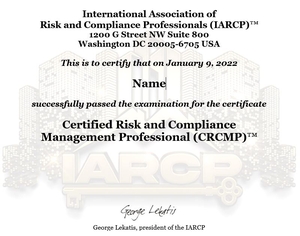Emerging Risks
What us Emerging Risk?

These are new risks that may challenge us in the future. These risks have the potential to crystallise at some point in the future, but are unlikely to impact our business during the next year.
The outcome of such risks is often more uncertain. They may begin to evolve rapidly or simply not materialise. Firms must monitor their business activities and external and internal environments for new, emerging and changing risks to ensure these are managed appropriately.
According to the Basel Committee, a bank should be able to capture and aggregate all material risk data across the banking group. Data should be available by business line, legal entity, asset type, industry, region and other groupings, as relevant for the risk in question, that permit identifying and reporting risk exposures, concentrations and emerging risks.
A bank’s risk data aggregation capabilities should include all material risk exposures, including those that are off-balance sheet.
A banking organisation is not required to express all forms of risk in a common metric or basis, but risk data aggregation capabilities should be the same regardless of the choice of risk aggregation systems implemented. However, each system should make clear the specific approach used to aggregate exposures for any given risk measure, in order to allow the board and senior management to assess the results properly.
Supervisors expect banks to produce aggregated risk data that is complete and to measure and monitor the completeness of their risk data. Where risk data is not entirely complete, the impact should not be critical to the bank’s ability to manage its risks effectively. Supervisors expect banks’ data to be materially complete, with any exceptions identified and explained.
A bank’s risk data aggregation capabilities should be flexible and adaptable to meet ad hoc data requests, as needed, and to assess emerging risks. Adaptability will enable banks to conduct better risk management, including forecasting information, as well as to support stress testing and scenario analyses.
Risk management reports should include exposure and position information for all significant risk areas (eg credit risk, market risk, liquidity risk, operational risk) and all significant components of those risk areas (eg single name, country and industry sector for credit risk). Risk management reports should also cover risk-related measures (eg regulatory and economic capital).
Reports should identify emerging risk concentrations, provide information in the context of limits and risk appetite/tolerance and propose recommendations for action where appropriate. Risk reports should include the current status of measures agreed by the board or senior management to reduce risk or deal with specific risk situations. This includes providing the ability to monitor emerging trends through forward-looking forecasts and stress tests.
Learning from the Annual Reports
Emerging Risks, important parts from the 2021 Annual Report, Lloyds Banking Group plc
EMERGING RISKS
Horizon scanning and emerging risks are important considerations for the Group, enabling our business to identify the most pertinent risks and opportunities and respond through our strategic planning and long-term risk mitigation framework.
Internal working groups have been established to regularly scan the horizon and identify emerging risks. This is supplemented by consultation with external experts, to gain an external context, ensuring broad coverage.
Progress has been made this year on a data-driven approach, piloting a methodology for interrogating industry news and other external data sources, using available technology to further expand our insight. It is intended to develop this further in 2022, to incorporate more sophisticated technology and innovation practices.
In many cases, the Group’s most notable emerging risks are aligned with the themes identified. These emerging risks themes raise questions in respect of our participation choices, HR policies, recruitment and retention strategies in response to the changing socio-economic, competitive and technological landscape.
Background and framework
Understanding emerging risks is an essential component of the Group’s risk management approach, enabling the Group to identify the most pertinent risks and opportunities, and to respond through strategic planning and appropriate risk mitigation.
Although emerging risk is not a principal risk, if left undetected emerging risks have the potential to adversely impact the Group or result in missed opportunities.
Impacts from emerging risks on the Group’s principal risks can materialise via two different routes:
• Emerging risks can impact the Group’s principal risks directly in the absence of an appropriate strategic response.
• Alternatively, emerging risks can be a source of new strategic risks, dependent on our chosen response and the underlying assumptions on how given emerging risks may manifest.
Where an emerging risk is considered material enough in its own right, the Group may choose to recognise the risk as a principal risk.
Recent examples of this include climate risk and strategic risk. Such elevations are considered and approved through the Board as part of the annual refresh of the enterprise risk management framework.
Risk identification
The basis for risk identification is founded on collaboration between functions across the Group. The activity incorporates internal horizon scanning and engagement with external experts to gain an external context, ensuring broad coverage.
This activity is inherently linked with and builds upon the annual strategic planning cycle and is used to identify key external trends, risks and opportunities for the Group.
The Group is evolving its methodology in respect of the identification and prioritisation of emerging risks. 2021 saw the development of a quantitative risk assessment methodology for understanding the connectivity of strategic risk. Drawing on this methodology and findings, we have expanded our insights by considering the emerging risks that relate to macro strategic risk themes.
Notable emerging risks and their implications
The Group considers the following emerging risk themes as having the potential to increase in significance and affect the performance of the Group. These risks can align to one or more of the Group’s macro strategic risk themes (detailed in the risk overview section on page 51) and are considered alongside the Group’s operating plan.
Breakdown of the EU - Wide-ranging risks associated with dissolution of the European Union, with member states choosing to function independently.
Climate change transition risk - Risks arising from the Group's participation choices, policies and investments to support transition to a zero carbon economy and its ability to meet published climate targets.
Data-driven propositions - Harnessing real-time data, emerging technologies and communication channels, to meet consumer appetite for bespoke products and services.
Digital currencies - Risks and opportunities posed by introduction of new, or wider adoption of existing, digital currencies, associated supporting infrastructure and subsequent management.
Evolving regulation - Changing regulatory standards and possibility of retrospective application, driving reputational damage, fines, litigation and remediation activity.
Future pandemics and the world’s ability to respond - Economic, political, social and technological impacts caused by mutations of existing viruses, new viruses, or resistance to treatments for existing illnesses.
Inequality and changing demographic - Widening wealth and opportunity gap, increasing diversity and changing age mix within society, resulting in changing demands on banking.
Long term impact of the UK’s exit from the EU - Long-term macro-economic, regulatory and social impacts on the UK as a result of the UK’s exit from the EU.
Modern skills and recruitment diversity - Diversification of recruitment approach in respect of candidate backgrounds, skills and avenues of attainment, to adapt to a modern technology-driven landscape.
Pace of technological change - Ability to keep pace with accelerating technological change, evolving technology landscape, changing customer expectations and new product and service propositions.
Populism, de-globalisation and supply chains - Disenfranchisement driving geopolitical tensions between states, diminishing integration and adverse effects on supply chains.
Science, technology, engineering and mathematics (STEM) qualification supply vs demand - Risks posed by the balance of STEM degree qualification in the UK lagging behind the accelerating demands for STEM qualified candidates in the workforce.
Scottish independence - Wide-ranging consequences arising from the movement for Scotland to become a sovereign state, independent from the United Kingdom.
Ways of working - Ability to provide a colleague proposition enabling flexible location and agile working, aligning to individual requirements, together with associated risks of such arrangements (e.g. Operational, People and Data risk).
You may also visit:
The Role of the Risk Officer: https://www.risk-officer.com/Role_Of_Risk_Officer.html
Credit Risk: https://www.risk-officer.com/Credit_Risk.htm
Market Risk: https://www.risk-officer.com/Market_Risk.htm
Operational Risk: https://www.risk-officer.com/Operational_Risk.htm
Systemic Risk: https://www.risk-officer.com/Systemic_Risk.htm
Political Risk: https://www.risk-officer.com/Political_Risk.htm
Strategic Risk: https://www.risk-officer.com/Strategic_Risk.htm
Conduct Risk: https://www.risk-officer.com/Conduct_Risk.htm
Reputation Risk: https://www.risk-officer.com/Reputation_Risk.htm
Liquidity Risk: https://www.risk-officer.com/Liquidity_Risk.htm
Cyber Risk: https://www.risk-officer.com/Cyber_Risk.htm
Climate Risk: https://www.risk-officer.com/Climate_Risk.htm
Emerging Risk: https://www.risk-officer.com/Emerging_Risk.htm
Membership and certification
Become a standard, premium or lifetime member. Get certified.
In the Reading Room (RR) of the association you can find our weekly newsletter - "Top risk and compliance management news stories and world events, that (for better or for worse) shaped the week's agenda, and what is next". Our Reading Room


